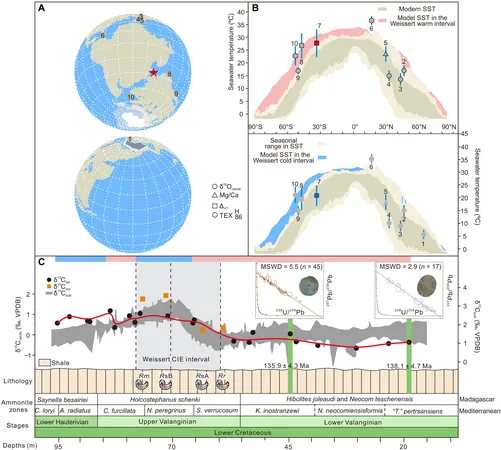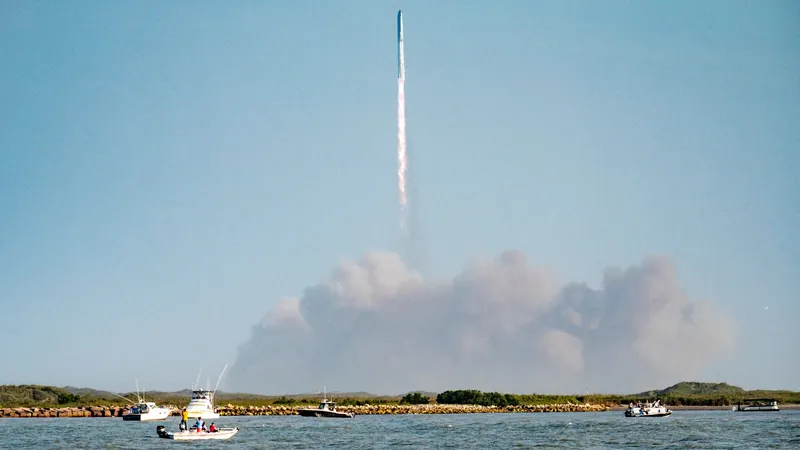
Ancient Oyster Fossils Rewrite Climate History: A New Look at Greenhouse Dynamics
2025-05-13
Author: Olivia
Revolutionary Discoveries in Fossilized Oysters
A groundbreaking international research team has upended long-held beliefs about Earth's greenhouse climate by examining fossilized oyster shells. Their study reveals surprising annual temperature fluctuations in the sea during the Early Cretaceous period, specifically the Valanginian stage, which occurred between 139.8 and 132.9 million years ago.
Challenging Established Beliefs
Traditionally, scientists have thought that periods characterized by a greenhouse climate were marked by consistent warm temperatures and minimal seasonality. However, this new research indicates otherwise, unveiling significant seasonal temperature shifts and intermittent glacial melts. The study is published in the esteemed journal, Science Advances.
The Research Team and Methodology
Led by Prof. Ding Lin from the Institute of Tibetan Plateau Research at the Chinese Academy of Sciences, the team collaborated with experts from Germany, the U.K., and Madagascar. They utilized oyster fossils from the Neo-Tethys Ocean and advanced climate models to reconstruct historical temperature variations. By analyzing oyster shells—known for their reliable growth bands—they unearthed detailed insights akin to reading tree rings.
Unlocking Climate Secrets with Fossilized Shells
The researchers meticulously examined large Rastellum oyster shells, employing techniques such as scanning electron microscopy and cathodoluminescence to ensure preservation integrity. Their results indicated profound seasonal climate signals, linking growth patterns to temperature changes and freshwater influxes from glacial melts, reminiscent of today's Greenland ice sheet dynamics.
A Complex Climate Narrative
While many perceive global warming as a straightforward rise in temperature, this study reveals the intricacies of Earth's climate system, suggesting that elevated greenhouse gases may amplify seasonal extremes rather than induce uniform warmth. The researchers speculate that glacial episodes during the Valanginian were influenced by volcanic activity and celestial cycles.
Connecting Ancient and Modern Climate Threats
As Dr. Wang Tianyang noted, the current climate change scenario is multifaceted. Just as geological events in the past have impacted temperatures, contemporary human activities may also provoke unexpected cooling trends.
A Deeper Understanding of Earth's Climate History
This research not only solidifies the knowledge of Valanginian ice volume but also sets the stage for further exploration of land-ocean interactions within greenhouse climates. Prof. Andreas Mulch proclaimed, 'This study opens a new window into Earth's past climate, revealing seasonal rhythms that were previously hidden.'
Implications for Future Climate Research
These findings are crucial for understanding how current climate dynamics might evolve. As we confront the realities of climate change today, insights drawn from our planet's ancient history could inform strategies for a sustainable future.









 Brasil (PT)
Brasil (PT)
 Canada (EN)
Canada (EN)
 Chile (ES)
Chile (ES)
 Česko (CS)
Česko (CS)
 대한민국 (KO)
대한민국 (KO)
 España (ES)
España (ES)
 France (FR)
France (FR)
 Hong Kong (EN)
Hong Kong (EN)
 Italia (IT)
Italia (IT)
 日本 (JA)
日本 (JA)
 Magyarország (HU)
Magyarország (HU)
 Norge (NO)
Norge (NO)
 Polska (PL)
Polska (PL)
 Schweiz (DE)
Schweiz (DE)
 Singapore (EN)
Singapore (EN)
 Sverige (SV)
Sverige (SV)
 Suomi (FI)
Suomi (FI)
 Türkiye (TR)
Türkiye (TR)
 الإمارات العربية المتحدة (AR)
الإمارات العربية المتحدة (AR)